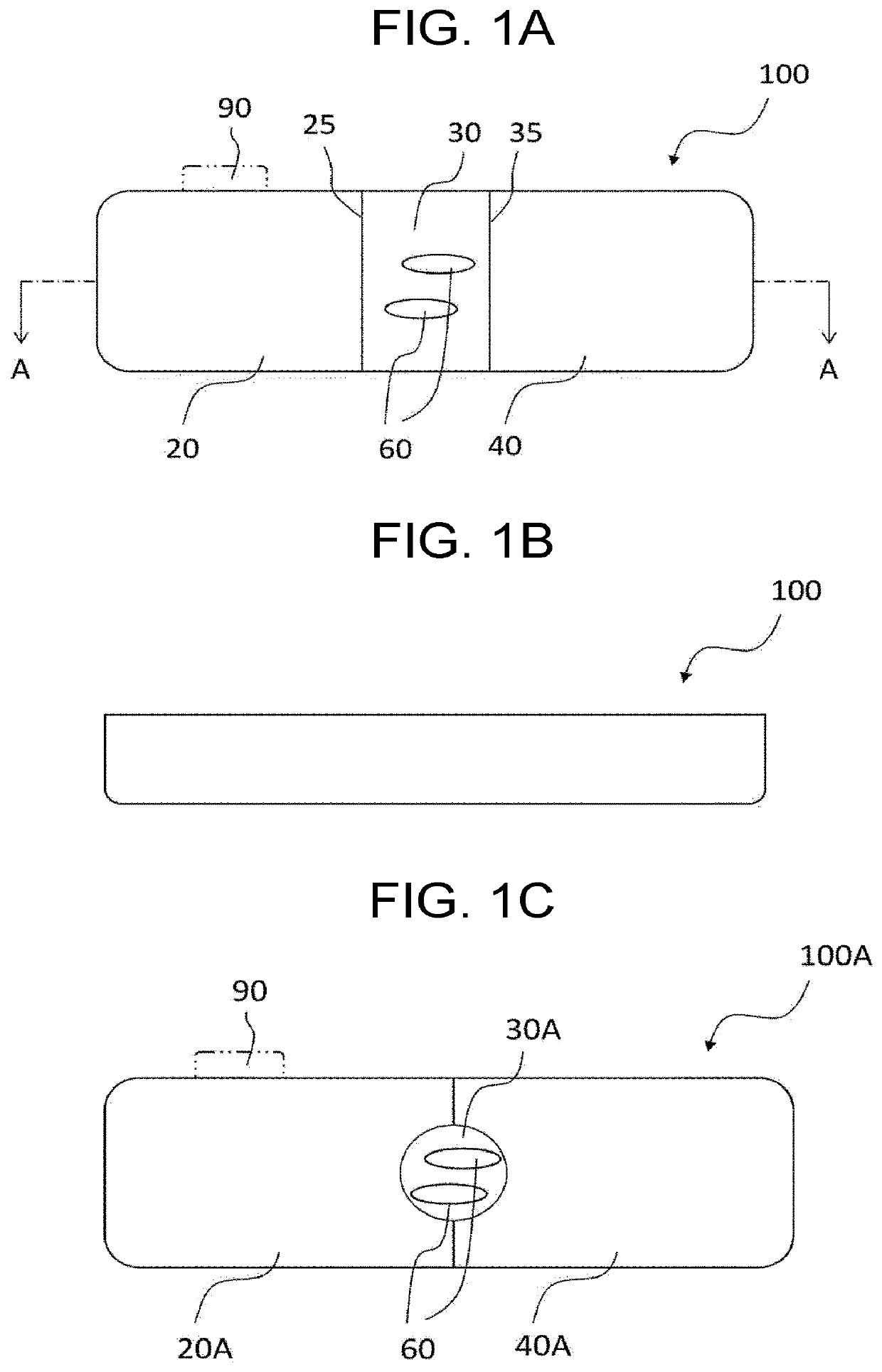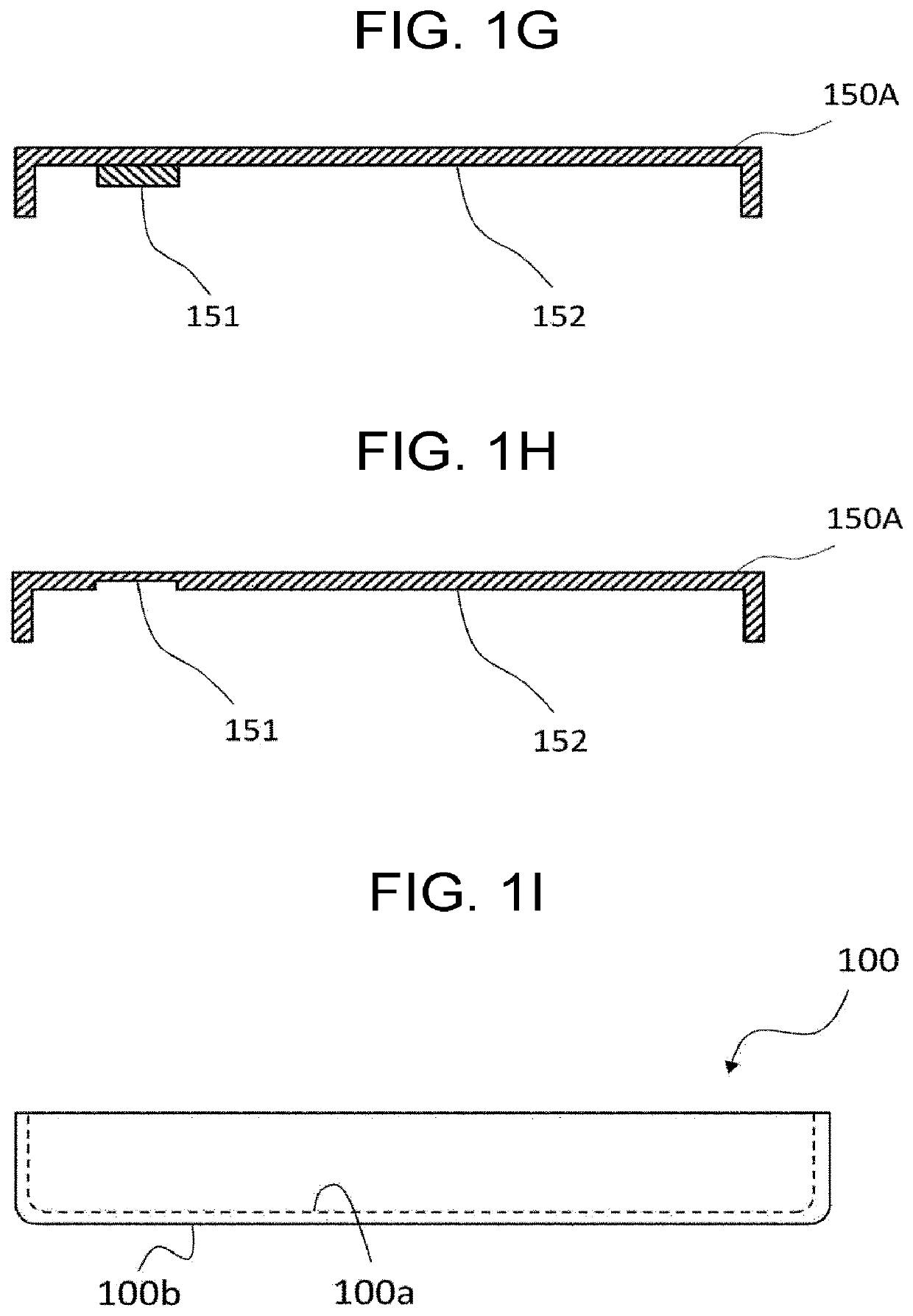Method for evaluating taxic behavior in response to odor substance based on olfactory sense in nematodes, and dish and behavior evaluation system used in evaluation method
- Summary
- Abstract
- Description
- Claims
- Application Information
AI Technical Summary
Benefits of technology
Problems solved by technology
Method used
Image
Examples
first embodiment
Modified Example of First Embodiment
[0071]The modified example 100A of the first embodiment will be hereinafter described with reference to FIG. 1C. The components of the modified example 100A of the first embodiment and the usage thereof are the same as in the dish 100 of the first embodiment shown in FIGS. 1A and 1B, except that the partition pattern (partition shape) of the first, second, and third regions on the bottom surface is different. Accordingly, only the partition pattern will be described below, while the same parts as in the dish 100 of the first embodiment will be denoted by the same reference numerals, and the descriptions thereof will be omitted.
[0072]The modified example 100A of the first embodiment is the same as the dish 100 of the first embodiment in that the second region 30A is arranged at the boundary between the first region 20A and the third region 40A. However, the modified example 100A of the first embodiment is different from the dish 100 of the first em...
second embodiment
[0087]The dish 200 of the second embodiment will be described with reference to FIG. 2A. The dish 200 of the second embodiment is the same as the dish 100 of the first embodiment shown in FIGS. 1A and 1B except that the partition pattern on the bottom surface is different. Accordingly, the same parts as in the dish 100 of the first embodiment will be denoted by the same reference numerals, and the descriptions thereof will be omitted.
[0088]As shown in FIG. 2A, the bottom surface of the dish 200 of the second embodiment is partitioned into at least four regions of a first region 210, a second region 220, a third region 30, and a fourth region 40 from an end on one side toward the other end in the longitudinal direction. The difference from the dish 100 of the first embodiment is that the first region 10 is further partitioned into two of the first region 210 and the second region 220 in the dish 200 of the second embodiment. As shown in FIG. 2A, the first region 210 and the second re...
third embodiment
[0099]The third embodiment provides a solution to a new problem that the number of nematodes that penetrate into the gap between the inner wall of the dish and the solid medium increases as the size of the dish decreases, and the number of nematodes that can be observed decreases as time elapses. The third embodiment is characterized by the shape of the surface (upper surface) of the solid medium that is formed after the solid medium is introduced into the dish, not by the shape of the dish. Hereinafter, the third embodiment will be described with reference to FIGS. 10 to 12.
[0100]FIG. 10 is a schematic diagram comparing the evaluation system of the third embodiment of the present invention with the conventional evaluation system disclosed in Patent Literature 1. In the conventional evaluation system, the outer periphery of the surface onto which nematodes are disseminated is surrounded by the sidewall of the dish. The evaluation system of the third embodiment of the present inventi...
PUM
 Login to View More
Login to View More Abstract
Description
Claims
Application Information
 Login to View More
Login to View More - R&D
- Intellectual Property
- Life Sciences
- Materials
- Tech Scout
- Unparalleled Data Quality
- Higher Quality Content
- 60% Fewer Hallucinations
Browse by: Latest US Patents, China's latest patents, Technical Efficacy Thesaurus, Application Domain, Technology Topic, Popular Technical Reports.
© 2025 PatSnap. All rights reserved.Legal|Privacy policy|Modern Slavery Act Transparency Statement|Sitemap|About US| Contact US: help@patsnap.com



